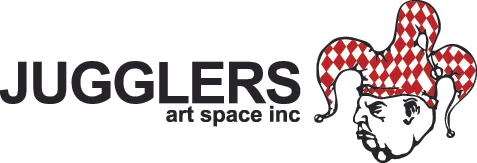“In Depth” - Joanna Bone and Aaron Micallef
/With art today becoming a highly tactile, visceral and immersive experience, the medium of glass takes on a significance that it may have never had before. Joanna Bone’s works call to be touched. There is something beyond the composition of forms and even beyond the many colours of the works that attracts us. Looking at the sculptures, one wants to delve into the layers of glass: to thread your hand through the ribbons of its substance. The tension between what we know to be a solid object and the molten, taffy-like quality those objects exude cannot be overcome and constantly draws us back for just one more look. If we can judge art by its hold of the eye, then Bone’s project undoubtedly succeeds.
The collection takes its inspiration from the life forms of the deep sea. This is not through any explicit citation but in a kind of collage of shapes and surfaces found on the ocean floor. The works have the veneer of mysticism we often associate with those creatures that lie out of sight, below the land and below our general consciousness.
Again, I find the medium to draw out the subject matter in a way painting, photography or clay could not. Creatures of the deep sea are boneless, transparent and when photographed reflect a multitude of colours. What better material then than one that appears structure-less and organic and one that is ultimately not about outside surface but the strata beneath it?
Bone’s process is not of sculpting but of layering. Using cane to colour her glass, she works by creating a series of thin, pencil like rods each woven with a coloured pattern, much like rock candy before it is cut. These can then be wrapped around a hot bulb of glass, creating an egg like shape, and then stretched again to create a new, more intricate set of cane rods. The process can be repeated indefinitely; completed when Bone feels she has reached the complexity she requires.
The final works are a residue of Bone’s practice. We can read into the layers and see where colours have been combined, stretched and stretched again.
The centrepiece of the exhibition is an installation of tall, seaweed like structures. A series of green poles rise out of the plinth and curve like seaweed floating in the sea. This is the work that holds most evidence of the artist’s fact. The seaweed appears to be heaved up, strung out by Bone herself. We can trace the artist’s hand through the curving of its forms. Seaweed has the most direct effect on the viewer: not purely through a removed, aesthetic appreciation but through a more tangible connection to the action of its creation.
I feel, however, the show would be lacking without the accompanying photography of Aaron Micallef. Micallef does not simply document Bone’s work but takes it as a springboard for his own art. Most of his images are digitally manipulated: a result of clear glass being too reflective and frosted glass appearing already to be out of focus. Those images that most alter Bone’s glass are by far the most interesting.
In his Clypeasteroidia collection, Micallef photographs the frosted glass and then sharpens the contrast of the image. The milky, clouded surface of the original sculpture takes on a bright and luminous quality. The sculpture and the photograph of it become quite different objects. Yet in this lies the true appeal of the show. Micallef brings out what we may at first have missed in Bone’s sculpture. We are able to see the original through its copy and, as such, see it more clearly. What looks like a cross stitch in the glass reappears as scales in the photo. The copy returns the original to its own inspiration.
Throughout the show there is a lovely doubling of spectatorship. Bone watches the sea and Micallef watches Bone. While both artists create good works in their own right, it is the coming together of the two that gives value to the exhibition. It is perhaps ultimately a show about watching. We are invited to look deeply into the levels of Bone’s work and deeper yet through Micallef’s transformation of them. It is an exhibition about both how closely we can see and how, through the selections of seeing, we create our own art.
Written by Sophie Rose


